Catching up on your reading over the summer isn’t just for kids and college students. Whether you flee D.C. in August for the rolling hills or the roiling waves (or just crank up the AC), here are The Georgetowner’s recommendations of recent books, sorted by genre. Best of all, though you’re welcome to, don’t feel you have to turn in a book report…
Biographies
Biographies of presidents and politicians and political leaders are a lot like obituaries: summations of lives and their meaning in the stream of American history. These days, however, that’s often not the case. Some of the subjects are actually still alive and very much kicking (or maybe not so much).
We are, it seems, in something of a golden age of political biographies, seeing the continued work of world-class biographers and historians: David McCullough, Ron Chernow (whose “Alexander Hamilton” will gain him eternal fame as source book for the bound-to-run-forever Broadway musical), Walter Isaacson, Edmund Morris (with his three-part life of Theodore Roosevelt and “Dutch,” his very unusual biography of Ronald Reagan) and Jon Meacham among them.
Some of them have new works, some of them have built a body of work that includes books you should take to the beach and settle in for a steady and long read.
Here are a few of the most notable recent biographies.

American Ulysses: A Life of Ulysses S. Grant by Ronald C. White
American Ulysses
Sharply written with insight, this portrait by Ronald C. White of the Civil War’s greatest general and arguably troubled two-term president can serve as a bookend to Grant’s own memoir, which he wrote under the twin pressures of terminal cancer and trying to help his family financially. It’s considered an American classic.
The Wright Brothers
Now in his eighties, with this book on the aviation pioneers David McCullough has returned to his other fascination (apart from presidents, that is): inventors. He produced to my mind the best American political and presidential biography ever: “Truman,” his first biography. Both “Truman” and his “John Adams” won the Pulitzer Prize.
Destiny and Power: The American Odyssey of George Herbert
Walker Bush
Jon Meacham aimed for readability in his books on Andrew Jackson and Thomas Jefferson. But the surprise is this massive 2015 work (806 pages with notes), for which Meacham had access to the former president, an intimacy that enlivens the book and its story, which in the end should raise the stature of a man often maligned by his critics (“Read my lips”).
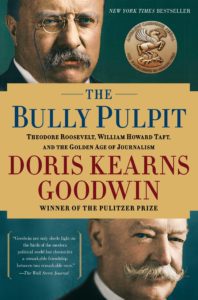
The Bully Pulpit: Theodore Roosevelt, William Howard Taft, and the Golden Age of Journalism by Doris Kearns Goodwin
The Bully Pulpit: Theodore Roosevelt, William Howard Taft, and the Golden Age of Journalism
Doris Kearns Goodwin has her flaws (which have been documented), but she is deservedly praised for writing books that are splendid both as biography and as histories of the political process, notably “No Ordinary Time: Franklin and Eleanor Roosevelt,” and “Team of Rivals: The Political Genius of Abraham Lincoln,” the basis for Steven Spielberg’s “Lincoln.”
Speaking of Lincoln, the best biography to my mind is the beautifully written and powerful “With Malice Toward None” by Stephen B. Oates, also the author of “Let the Trumpet Sound,” about Martin Luther King, Jr.
Political Books
For political types in Washington, political books may involve persons we know in the neighborhood or meet at frequent, close-by events, whether literary or social. The following selection, keyed to the 2016 presidential campaign, is of the moment. After all, we’re not talking “The Federalist Papers,” “Democracy in America” or essays by Cicero here.
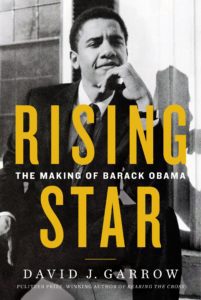
Rising Star: The making of Barack Obama
Rising Star: The Making of Barack Obama
This more than 1,400-page tome chronicles Barack Obama’s years from Hawaii to Chicago. After a Politics & Prose talk, Georgetowner senior correspondent Peggy Sands ended up having dinner — at Comet Pizza, no less — with the author, Obama’s former professor David Garrow, and his major source, Robert Fisher, Obama’s best friend at Harvard Law School. “My head is still spinning with all the insights Garrow and Fisher happily shared,” she wrote.
Obama: The Call of History
Peter Baker of the New York Times paints a portrait of Obama’s eight years in office, along with photographs. Just out, it looks like a keeper.
Shattered: Inside Hillary Clinton’s Doomed Campaign
Political writers Jonathan Allen and Amie Parnes outline all the mess-ups and conceits of the Clinton run — she was always the front-runner, no? While painful for partisan Democrats, the read is a necessary one for the sake of reality. The authors also penned a Clinton biography, “HRC.”
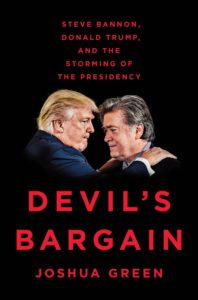
Devil’s Bargain by Joshua Green
Devil’s Bargain: Steve Bannon, Donald Trump, and the Storming of the Presidency
Since Cicero was mentioned earlier, let’s cite Dante, as in the “Inferno” … but we digress. Joshua Green of Bloomberg Businessweek’s direct account explains how President Donald Trump won the election: “Trump wouldn’t be president if it weren’t for Bannon.” Green depicts the unlikely partners as well as campaign insiders, all part of America’s biggest political upset and the ensuing chaos.
Hillbilly Elegy: A Memoir of a Family and Culture in Crisis
This is where culture rams into politics, and it explains a lot about Appalachia and America — with insights for the 2016 campaign. James David “J. D.” Vance began writing his personal, family stories in Yale Law School, moved to venture capitalism and is now in demand for speeches and TV commentary. The book strikes a nerve and is a must-read.
Novels
What with the essay collections and nonfiction books that make you feel better informed, novels can easily be ignored. To do so, however, would be to miss out on the pleasure that comes from reading a novel. Novels provide the opportunity to get lost in beautiful worlds where your attention is focused on a story. The result? Reading novels expands your mind, opening you up to ideas that you thought were already settled.
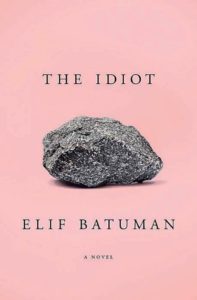
The Idiot by Elif Batuman
The Idiot
This book, by Elif Batuman, is about Selin, a Turkish American student at Harvard who gets drawn into the world of a few Eastern European students. She also tutors people in need and travels to Hungary. In “The Idiot,” Batuman explores how, once the Hunger Games-style admissions process is over and done with, college students can become lost as to how to spend their precious and hard-earned time. Selin makes the decision to move away from the world she was curious about as a freshman and switch majors, from linguistics to philosophy. This is a great book for all kinds of people, but especially for parents and young people who want to understand the potential pitfalls of the college journey.
Mother Land
If your idea of a perfect summer vacation is sitting on a beach and taking the time to read a long book, this is a book to include in your luggage. Author Paul Theroux tells the story from the perspective of Jay, a man who becomes a writer but constantly has to deal with the chaos that is his family. His father dies, leaving him with his mother as his main parent. When Jay translates what his mother “really” meant when she said something, he learns through another sibling that he upset their mother. Even two of Jay’s children ask him to stop ranting about her. The funny thing is, despite finding his mother to be a difficult person to talk to, he shows that he cares about her. The mother eventually dies, but she lived a very long life. People who enjoy the dialogue that can be found in the movies “Good Will Hunting” and “The Perfect Storm” will love this book.
The Devil and Webster
University students seeking societal justice has been much in the news, but it is a rare thing to see the university world from the perspective of an institution’s president. As in her previous book, “Admission,” Jean Hanff Korelitz infuses a university official with a human spark. This book serves as a reminder that not everything is black and white, and that members of the media and university officials should approach stories about race and culture with more caution. An interesting twist is the inclusion of the university president’s daughter, who, for a while, enrolled at Webster College, which her mother leads. While addressing tension-filled subjects in this book, the author writes with humor and grace.
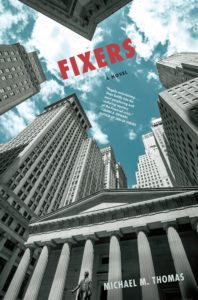
Fixers, A Novel by Michael M. Thomas
Fixers
Even in 2017, Wall Street is a mystery to many people who don’t obsess over the goings-on of the stock market. In this novel, by Michael M. Thomas, we get a disclosure from one of those Wall Street people. The narrator, Chauncey Arlington Suydam III, writes in a way that recalls a teenage girl writing in a diary, but with exceptional knowledge about the financial world. A WASP who attended Yale and became a member of the Skull and Bones secret society, he is the kind of person who enjoys the finer things in life and doesn’t want to lose such fineries. Railing at the election of President Obama, he shows that the financial sector is still a place that attracts an old boys’ club that resists change.
Mysteries
Americans love mystery books. Perhaps because, as some experts tell it, mysteries give a “safe thrill.” Deciding what thriller to put on your summer must-read shelf is an early summer mystery in itself. But this year the decision was clear early on.
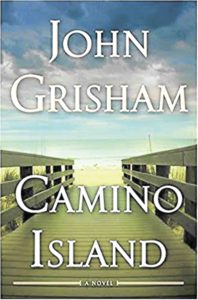
John Grisham’s Camino Island
Camino Island
The new John Grisham suspense novel has been number one on almost every fiction best-seller list since June. On June 28, Grisham signed copies of “Camino Island” at Politics & Prose. What’s more, the crime this time around involves books: rare books, stolen manuscripts, book dealers, bookstores and a fascinating if more than slightly motley crew of authors who work variously at their craft on a Florida island beach resort. Their lives revolve around the Bay Books bookstore, its suave owner, his French (may or may not be) wife and a newcomer — a struggling writer with a Ph.D. planted there as a spy. Like all Grisham’s books, the ending is a big surprise. But the real mystery is how Grisham’s writing just gets better and better.
Y is for Yesterday
There are so many women writing popular mystery series now, they’ve almost become their own genre. Often their books involve a special interest: quilting, baking, a tea shop, cats, even a book club. One of the most popular is Sue Grafton’s alphabet series. She places her stories in her hometown of Santa Barbara, California, in the pre-mobile-phone 1970s. Her private detective, Kinsey Millhone, has been solving community mysteries and crimes for almost 20 years in real time as Grafton goes through the alphabet, starting with “A is for Alibi.” Her latest, the next-to-last in the series, will be out in August.
About Face
Donna Leon sets her police stories in Venice, Italy, where she has lived for more than 30 years. But her books are so popular in D.C. that she filled Politics & Prose to deep standing room last year. Her Commissario Guido Brunetti is a delightfully sensible family man who maneuvers cleverly through the tricky and slippery politics of Italian law enforcement to solve crimes that are compelling, complicated and ultimately satisfying. His rocks are his family of two teenagers, his academic liberal wife and the mouthwatering Italian meals he eats with them every day at lunch. This is Leon’s 18th, published this summer.
The Fix
David Baldacci’s newest thriller is the third about an investigator with an extraordinary memory. It’s his 34th book, of which many became highly popular movies (“Absolute Power,” for instance). Like Grisham a former lawyer, Baldacci lives in Richmond but often sets his books in Washington, D.C., sometimes in Georgetown.
The Templars’ Last Secret
Martin Walker, a former D.C. journalist and think-tanker, wrote nine nonfiction books before turning to a mystery series about Bruno, chief of police in a small village in southwestern France known for its ancient cave paintings, vineyards and goose pâté. Walker highlights Bruno’s particular skills at community policing (arrest is the last option) while dealing with terrorists, aggressive political groups and the unresolved conflicts of past wars that inflict native French and immigrant residents alike. “The Templars’ Last Secret,” out this summer, is Walker’s ninth. But a warning: don’t read Bruno when you’re hungry. Descriptions of the food the charming policeman cooks up will drive you mad (Walker’s family is coming out with a Bruno cookbook soon). NPR’s Diane Rehm admits she’s hooked.
Blackout
A new entry in the terrorist thriller must-read category is a first novel by an Austrian writer, Marc Elsberg. Set in various European countries from Sweden to Italy, it involves an all-too-real hacking of the entire European electrical grid. The book has sold over two million copies in German and has just been translated into English.
Children’s Books
The three-year-old #weneeddiversebooks movement — spearheaded by authors and illustrators — is bearing fruit as publishers this year bring record numbers of diverse characters to young readers. Meanwhile, the #ownvoices movement has been pushing a parallel agenda: to support greater diversity among the authors themselves.
Parents love knowing that the authors speaking to their children are fully experienced with the kinds of diverse lives explored in these stories. The first-person narrative is the #ownvoices movement’s form par excellence. Here is a selection of the best first-person diverse narratives for children published in 2017 by diverse authors.
Greetings, Leroy
This lively, long-form picture book for ages 4 to 8 was written by Itah Sadu and illustrated by Alix Delinois. The first day at a new school is nerve-wracking enough, never mind when it’s in a new country. Roy, recently come from Jamaica, realizes while writing an email to an old friend that he may come to love his new home as much as he loves his old home.
Jasmine Toguchi, Mochi Queen
Debbi Michiko Florence wrote this book for ages 5 to 8. Eager to do something her big sister has not done first, Jasmine Toguchi, chatty and audacious at age 8, decides to pound mochi with the men and boys when her family gets together for New Year’s.

Cilla Lee-Jenkins
Future Author Extraordinaire By Susan Tan
Cilla Lee-Jenkins, Future Author Extraordinaire
In this book by Susan Tan, written for ages 6 to 9, 8-year-old Cilla Lee-Jenkins — 50-percent Chinese, 50-percent Caucasian — determines to make her mark as an author while facing the irritating arrival of a baby sister.
Amina’s Voice
Hena Khan wrote this book for ages 8 to 12. After tragedy strikes her community, a Pakistani American Muslim girl struggles to stay true to her family’s vibrant culture while simultaneously blending in at school.
The Epic Fail of Arturo Zamora
For age 10 and up, this story by Pablo Cartaya of an extended Cuban family and a close-knit community in Miami is told by one determined boy trying to stave off development and preserve his neighborhood.
This is Just a Test
Madelyn Rosenberg and Wendy Wan-Long Shang co-wrote this book for age 10 and up. In 1983, seventh-grader David Da-Wei Horowitz has lots of problems. His bar mitzvah’s coming soon, his Jewish and Chinese grandmothers argue about everything, his teammates for the upcoming trivia contest, Scott and Hector, don’t like each other, he’s beginning to notice girls and Scott has persuaded him to begin digging a fallout shelter — just in case the Cold War heats up.
Midnight Without Moon
The main character in this book by Linda Williams Jackson, for age 10 and up, is Rose Lee Carter, an African American girl who dreams of life beyond the Mississippi cotton fields during the summer of 1955. Her world is rocked when an African American boy, Emmett Till, is killed for allegedly whistling at a white woman.
Saints and Misfits
This book, by S.K. Ali, is for age 12 and up. Fifteen-year-old Janna Yusuf, a Flannery O’Connor-obsessed book nerd and the daughter of the only divorced mother at their mosque, tries to make sense of the events that follow when her best friend’s cousin — a holy star in the Muslim community — attempts to assault her at the end of sophomore year.


